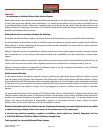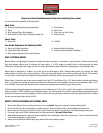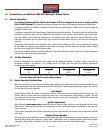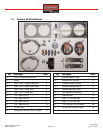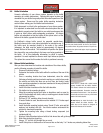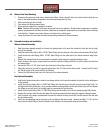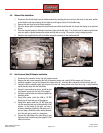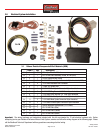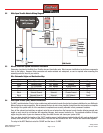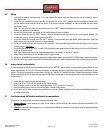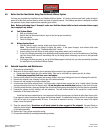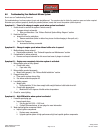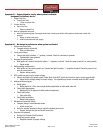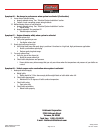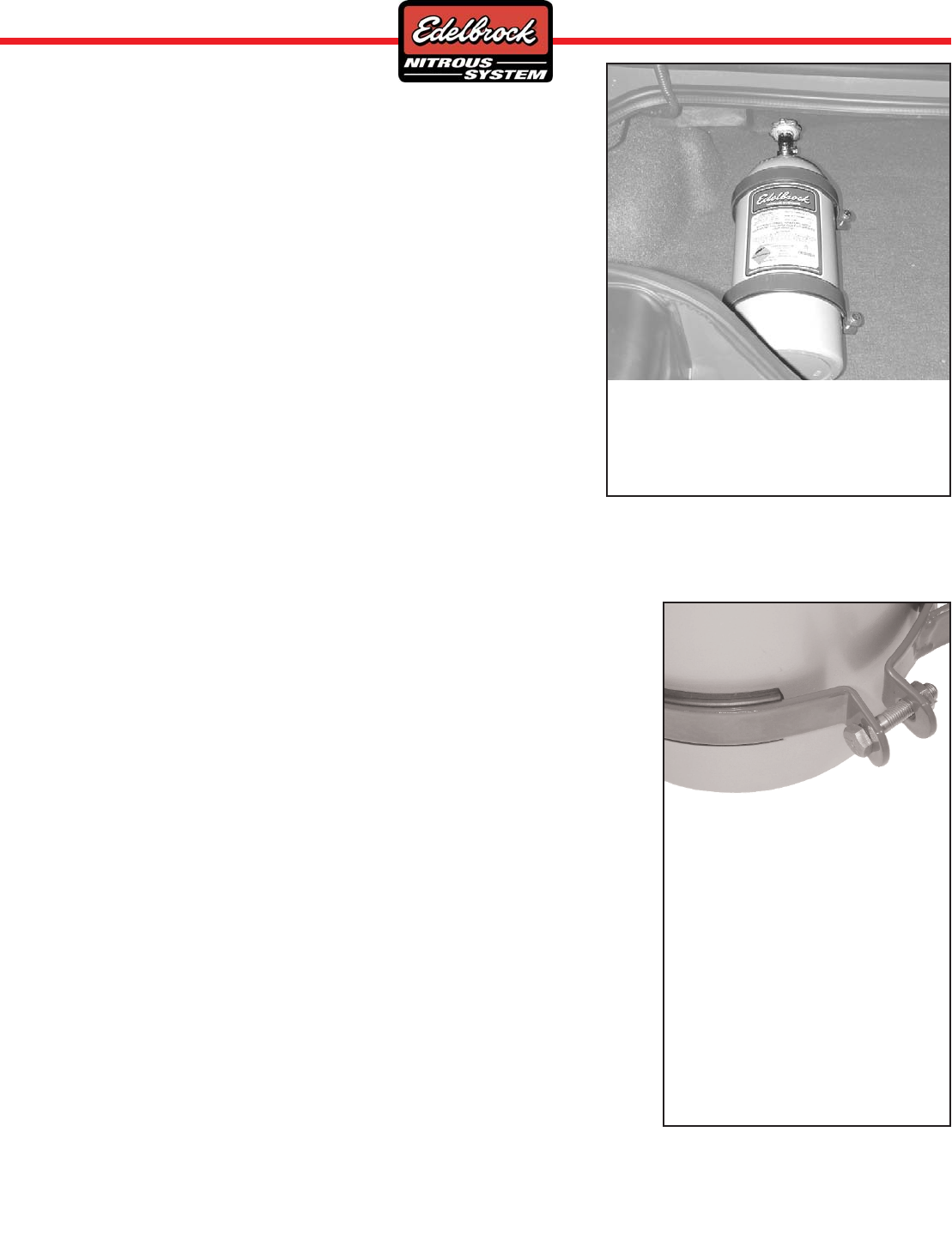
©2007 Edelbrock Corporation
Brochure #63-0478
Catalog #70410
Rev. 7/07 - DC/mc
Page 7 of 16
2.2 Bottle Orientation
Accurate calibration of your nitrous system depends on the bottle
remaining at a stable temperature. Choosing the proper location and
orientation for your bottle can greatly affect the overall operation of the
nitrous system. Please read the entire bottle mounting instruction
section before making your final bottle location decisions.
Bottle placement is critical to the performance of your nitrous system.
It is important to understand how the bottle valve and siphon tube are
assembled to properly orient the bottle in your vehicle and ensure that
it picks up liquid nitrous while undergoing acceleration. All nitrous
bottles are assembled so that the bottom of the siphon tube is at the
bottom of the bottle, opposite the bottle label.
An Edelbrock nitrous bottle cannot be mounted upside-down.
Edelbrock does not offer a non-siphon tube bottle for automotive use. If
the bottle must be mounted parallel to the axles of the vehicle
(sideways), the label must be angled at approximately 45 degrees
toward the front of the vehicle. This orientation will position the siphon
tube toward the rear and pointing to the lower rear-facing quadrant of
the bottle. All of this positioning information is critical to system
operation. It is most important to draw as much liquid nitrous as possible.
The siphon tube cannot do this unless the bottle is positioned correctly.
2.3 Nitrous Bottle Installation
After you have determined the location and orientation of the nitrous bottle,
use the following procedure to install the bottle:
1. Disconnect vehicle’s battery.
2. Determine the location of the bottle within the confines of the rear of the
vehicle.
3. Once a mounting location has been determined, raise the vehicle
(following all safety practices involved in working on a vehicle from under
the vehicle) and verify that there are no fuel lines, fuel tank(s), brake
lines, emissions equipment, or structural members in the way of potential
mounting bolt locations.
4. Install the rubber insulators within the bottle brackets.
5. Slip bottle into the mounting brackets.
6. Using the mounting bracket bolt holes as templates, mark an area for
each of the brackets with chalk, scribe, or marking pen to locate the bolt
placements for drilling.
7. Drill two (2) 3/8” mounting holes for each bracket.
8. If heater blanket is used, brackets must be installed 8-1/2 inches apart
from each other.
9. Install the bottle mounting brackets using “Grade 8” bolts, nuts and flat
washers (not included with kit). Use fender washers underneath the
vehicle for sheet metal mounting.
10. Tighten the mounting bolts using a thread locking compound (not
included with kit).
11. Mock up Safety Blowdown tube on bottle to find where tube will go through floor.
12. Mark floor where tube should go.
13. Using a 1/2” drill bit, drill through floor on mark.
14. Install Safety tube on bottle and cut off excess tube so that only 1 to 2 inches are protruding below floor.
The most efficient mounting is the lay-down position
with the valve handle toward the front of the vehicle.
This position allows the greatest amount of liquid to be
used before the siphon tube begins to pick up gaseous
nitrous oxide.
Shown here is a bottle with a bottle bracket
properly installed with the rubber insulator.
The distance between the bottle brackets is
somewhat adjustable. Remember, mount the
short bottle bracket at least 1” from the bottom
of the bottle, and never cover any of the bottle
labels with a bottle bracket.
Do not attempt to install the bottle in the
bracket without the rubber insulator. The
bottle hoop on the bracket is designed to
include the thickness of the insulator.




